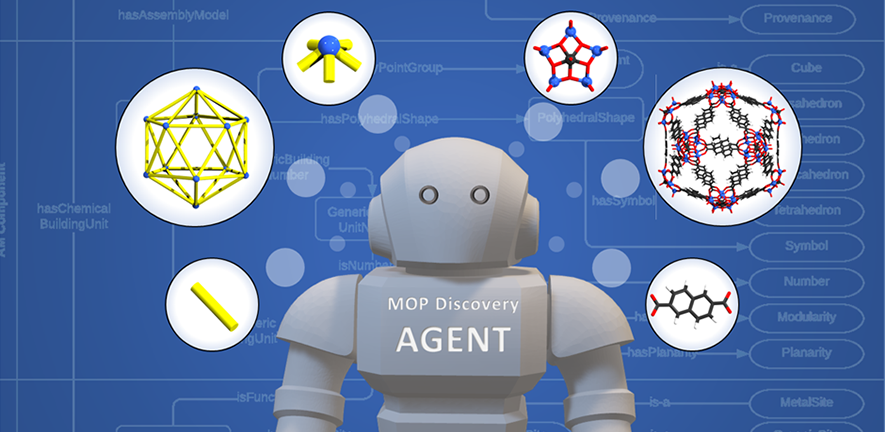
Submitted by Ellie Hall on Mon, 15/08/2022 - 10:45
Researchers from the University of Cambridge Department of Chemical Engineering and Biotechnology have used a subfield of artificial intelligence called “knowledge engineering” to emulate a human expert’s decision-making powers. Knowledge engineering is already used for drug discovery, intelligent decarbonisation, and laboratory automation, but this is the first time knowledge engineering has been applied to rationally design new metal-organic polyhedra (MOPs).
MOPs are symmetrical molecules made from combinations of metal-based building blocks linked together with carbon-based ligands and can be used as catalysts, membranes, gas storage, and sensors. With so many valuable applications, developing new MOPs is an active area of investigation for many researchers. But designing a new MOP usually requires a human expert with knowledge of the domain, chemical reasoning, and spatial thinking.
Now, Professor Markus Kraft’s research group here at CEB has used knowledge engineering principles and artificial intelligence agents to rationally design more than 1,000 new MOPs completely automatically.
“In contrast to machine learning approaches, which essentially rely on learning from vast amounts of data, knowledge engineering builds on the experience of a domain expert and makes new predictions for domains from a relatively small amount of data,” said Aleksandar Kondinski, the study’s first author.
The researchers effectively emulated the cognitive process that enables molecular engineers to design and propose new MOPs. They achieved this by describing structural blueprints based on which over 150 known MOPs can be rationally constructed using 137 chemical building units (CBUs). They called these structural blueprints assembly models.
From these known MOPs and building blocks, the researchers used knowledge engineering and artificial intelligence agents to discover more than 1,000 new MOPs. “Our study reveals that up to 1,418 new MOPs can be rationally designed using the same number of known CBUs. These new MOPs are targets of theoretical and experimental interest,” said Kondinski.
In this approach, information about MOPs is modelled through an ontology. An ontology is a way to show the properties of a subject area and how these properties are related by defining a set of concepts and categories that represent the subject. Using this ontological format, information on known MOPs and their building units can be “understood” by a computer, which can then logically derive new constructible MOP instances.
This ontology also means that MOP discovery can become part of a larger digital ecosystem. The researchers have incorporated this ontology into The World Avatar, a project aiming to increase interoperability between all processes. So far, The World Avatar contains information on quantum chemistry, chemical species, reaction networks, and experimental observations and includes software that can link these domains to share information. But the project also contains much more diverse data. Everything from flood prediction statistics to entire cities’ building plans has been incorporated into The World Avatar and is completely interoperable.
This interoperability could have far-reaching impacts. “Considering the urgency and interest to industrialise MOPs, The World Avatar could link the development of these materials with scaled-up process implementation in chemical plants, and also optimise the energy consumption and minimise waste in the process,” said Professor Markus Kraft, who led the research.
The developed software is freely accessible online. The results are reported in the Journal of the American Chemical Society.
This research was supported in part by the Alexander von Humboldt Foundation and the Isaac Newton Trust, the National Research Foundation of Singapore under its Campus for Research Excellence and Technological Enterprise (CREATE) programme, and the UK Engineering and Physical Sciences Research Council (EPSRC).

